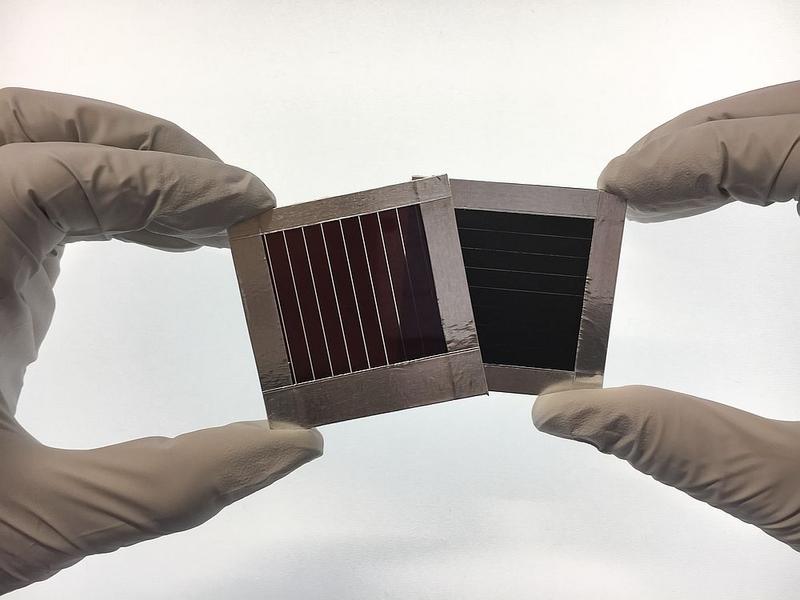From pv magazine Germany
Germany's Center for Solar Energy and Hydrogen Research Baden-Württemberg (ZSW) has developed a 21.1%-efficient tandem solar module based on perovskite and copper, indium, gallium and selenium (CIGS) thin-film technology.
The module measures 9 square centimeters and is characterized by an industrially suitable and scalable component architecture, according to its creators. The current best values for tandem solar modules made of perovskite and CIGS would only be slightly higher, at 22%. With smaller laboratory cells, ZSW has already achieved an efficiency of 26.6% for this material combination.
“The main progress that led to the efficiency improvement was made in the semitransparent perovskite top module,” Jan-Philipp Becker, Head of Department Photovoltaics – Materials Research at ZSW, told pv magazine. “First, the defect passivation was improved by employing a thin layer of phenethylammonium iodide (PEAI) on top of the multi-cation perovskite absorber. Second, using DC sputtered hydrogen doped indium oxide (IO:H), a high-mobility transparent conductive oxides (TCO) as the transparent contacts and magnesium fluoride (MgF2) anti-reflecting coating, the transparency in the long wavelength range was increased to values well above 85% in the near infra-red (NIR), which results in more light entering the CIGS bottom device.”
The scientists used organometallic perovskites, which are a promising group of materials for tandem solar modules, as they use the high-energy part of the solar spectrum very efficiently in the top solar module, due to their high optical energy bandgap. These compounds also allow a considerable low-energy part of the spectrum to pass into the second bottom solar module below.
Popular content
“The top perovskite half-module not only has to be highly efficient; it must also be semitransparent to allow enough light to pass through to the bottom module,” the researchers said. “They made several improvements to this end, including developing more transparent electrodes and enhancing the passivation of boundary layers.”
ZSW now wants to scale up and further develop the tandem thin-film technology, in cooperation with undisclosed interested industrial customers.
“Tandem solar cells that pair perovskite with CIGS offer benefits beyond high efficiency,” the research institute said. “This thin-film technology can also be deposited on plastic or steel films to make light, flexible modules that lend themselves to many more use cases. They can be installed the conventional way in solar parks and be seamlessly integrated into vehicles and on factory roofs that cannot handle heavy loads.”
This content is protected by copyright and may not be reused. If you want to cooperate with us and would like to reuse some of our content, please contact: editors@pv-magazine.com.


By submitting this form you agree to pv magazine using your data for the purposes of publishing your comment.
Your personal data will only be disclosed or otherwise transmitted to third parties for the purposes of spam filtering or if this is necessary for technical maintenance of the website. Any other transfer to third parties will not take place unless this is justified on the basis of applicable data protection regulations or if pv magazine is legally obliged to do so.
You may revoke this consent at any time with effect for the future, in which case your personal data will be deleted immediately. Otherwise, your data will be deleted if pv magazine has processed your request or the purpose of data storage is fulfilled.
Further information on data privacy can be found in our Data Protection Policy.